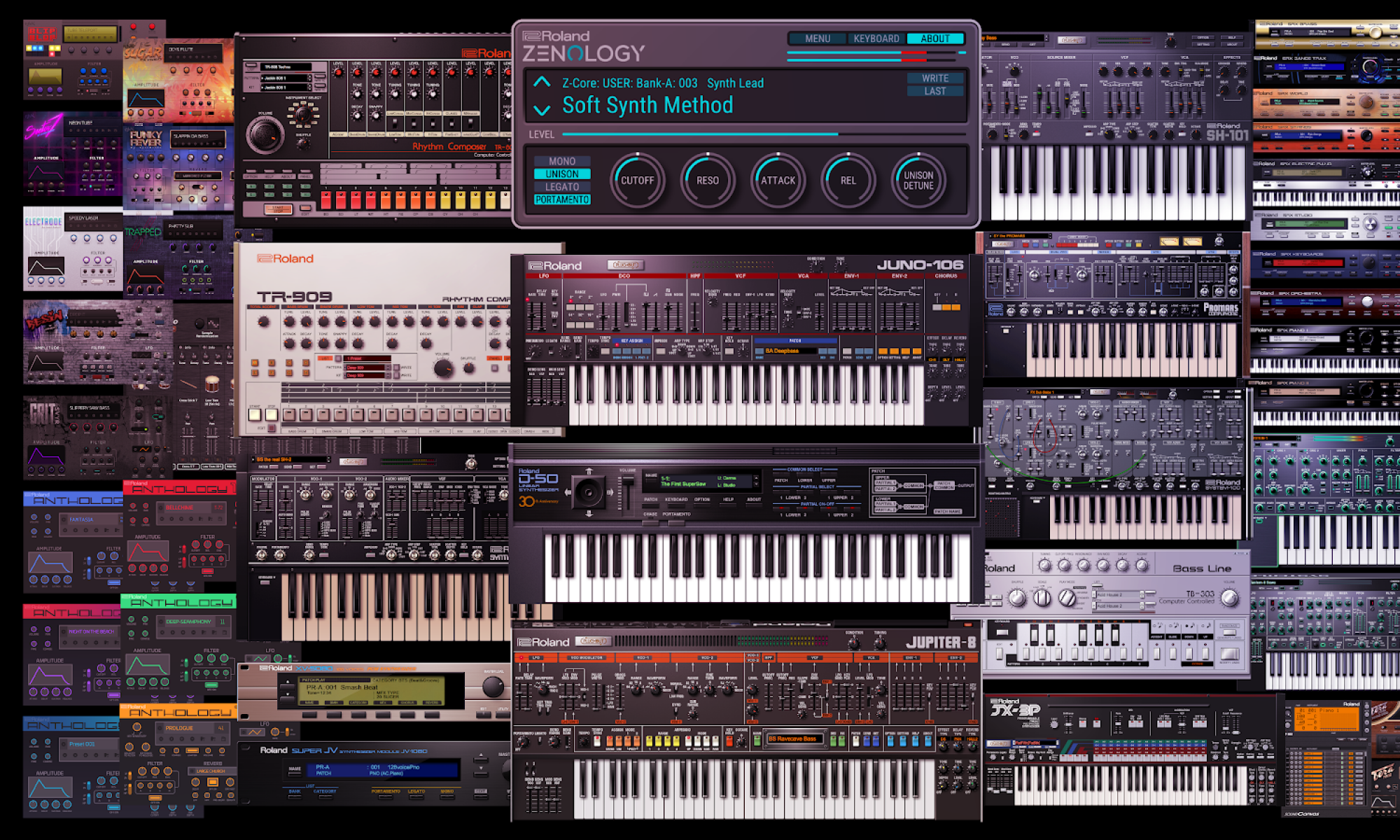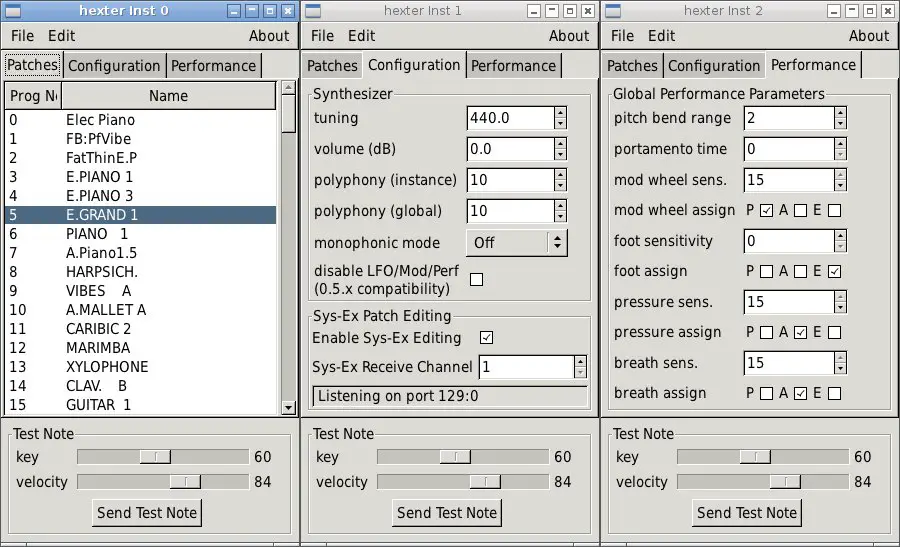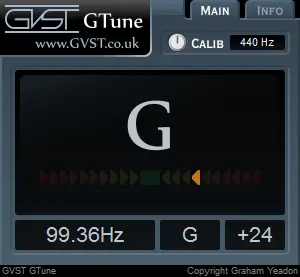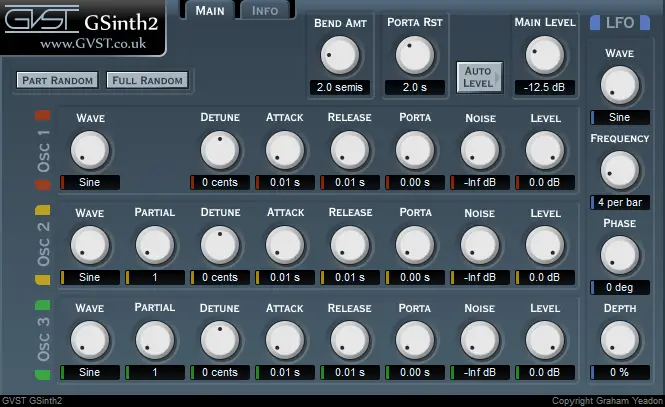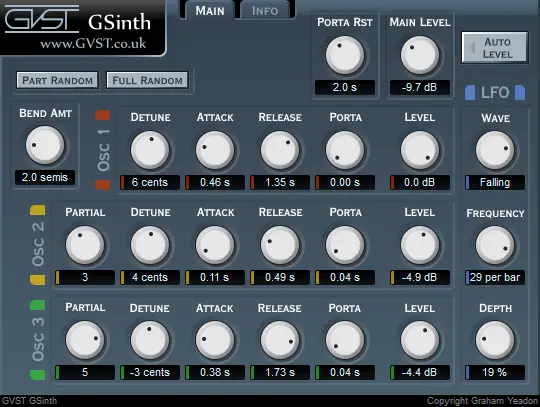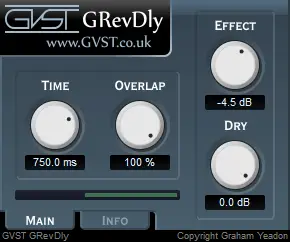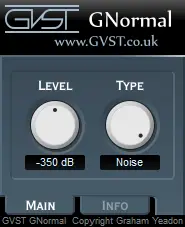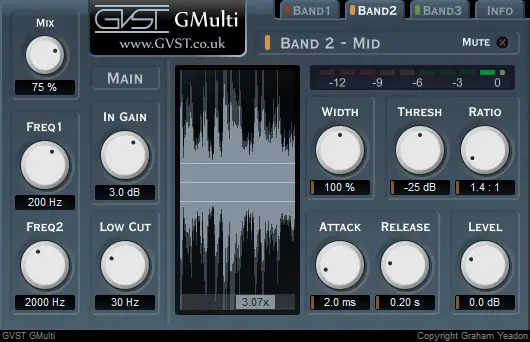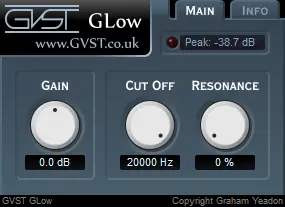GSnap is a free pitch corrector VST plugin developed by GVST. Compatible OS(s): Windows 64b, macOS, Linux.
GSnap is an auto-tune effect. It can be used subtly to correct the pitch of a vocal, or, with more extreme settings, to create a robot-voice effect.
For GSnap to work effectively, the input signal should be monophonic, at a good level and reasonably noise-free. For example, a clean, mono vocal recording, without excessive noise or reverb. Effect plug-ins should be placed after GSnap in the signal chain.
GSnap starts off by detecting the pitch of the incoming audio. The Min Freq and Max Freq parameters help the pitch-detector by narrowing the range of frequencies it needs to consider. Also, the Gate parameter should be set so that the pitch-detector ignores background noise during “silent” passages.
The Speed parameter sets the number of wave repetitions required for positive pitch-detection. Lower values for Speed will allow faster pitch-detection, but will increase the chance of false detection. The default value should be fine in most cases.
Once a pitch has been determined, GSnap applies the specified pitch-correction. There are two modes of pitch correction: fixed scale and MIDI. Fixed scale correction has a fixed set of snap-notes, while MIDI correction is controlled in real time by MIDI data.
The Threshold parameter sets the largest pitch-shift that will be applied to the input. It defines a region around each snap-note that will be corrected to that note. The GUI shows the snap-notes and regions in effect at any time.
The pitch-detection and correction can be made to use a different reference frequency using the Calibrate parameter. This sets the frequency of A above middle C.
Additionally, GSnap will respond to pitch-bend and modulation MIDI messages to apply pitch-bend and vibrato. The Pitch Bend, Vibrato and Vib Speed parameters control these effects.
http://www.gvst.co.uk/
